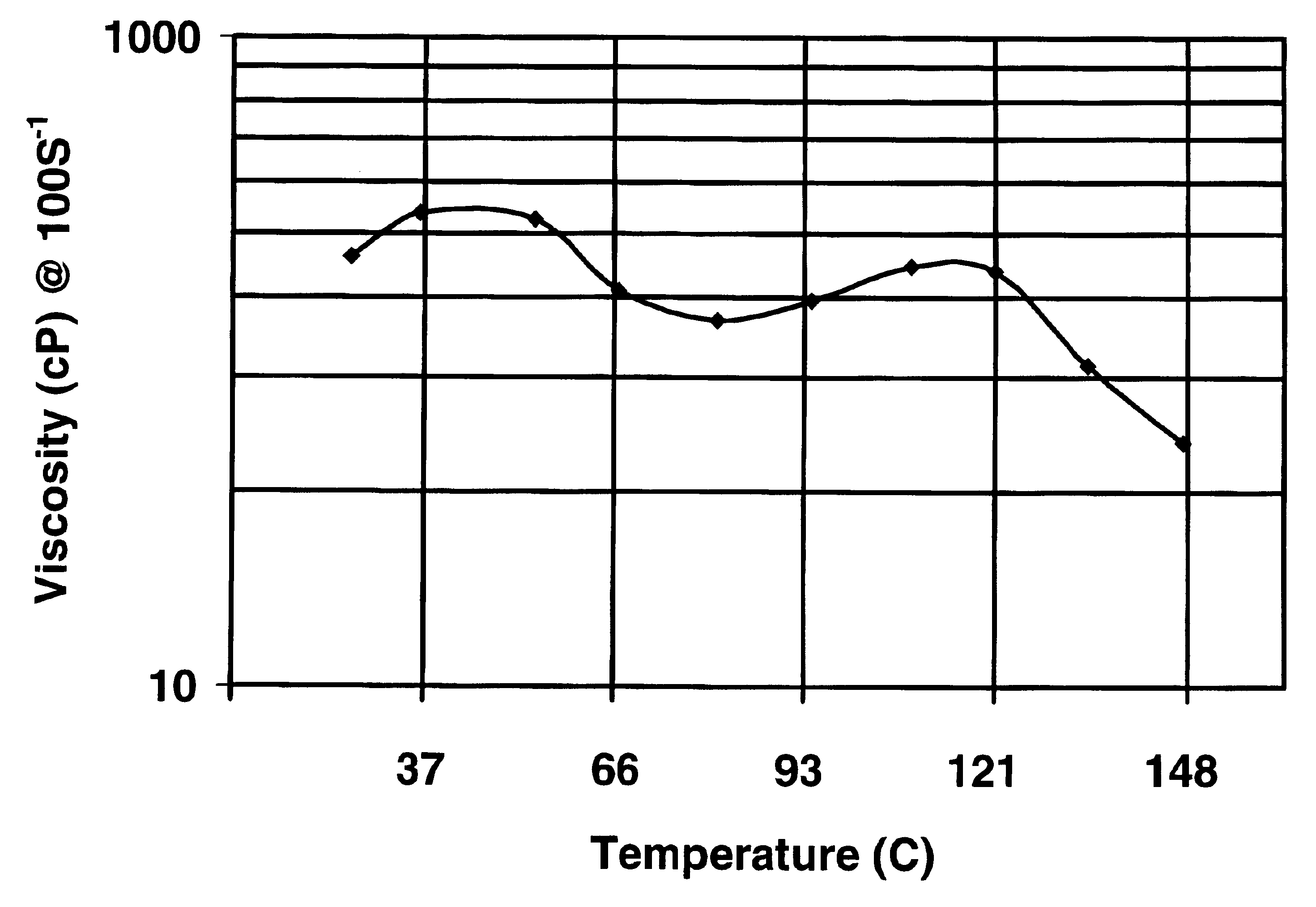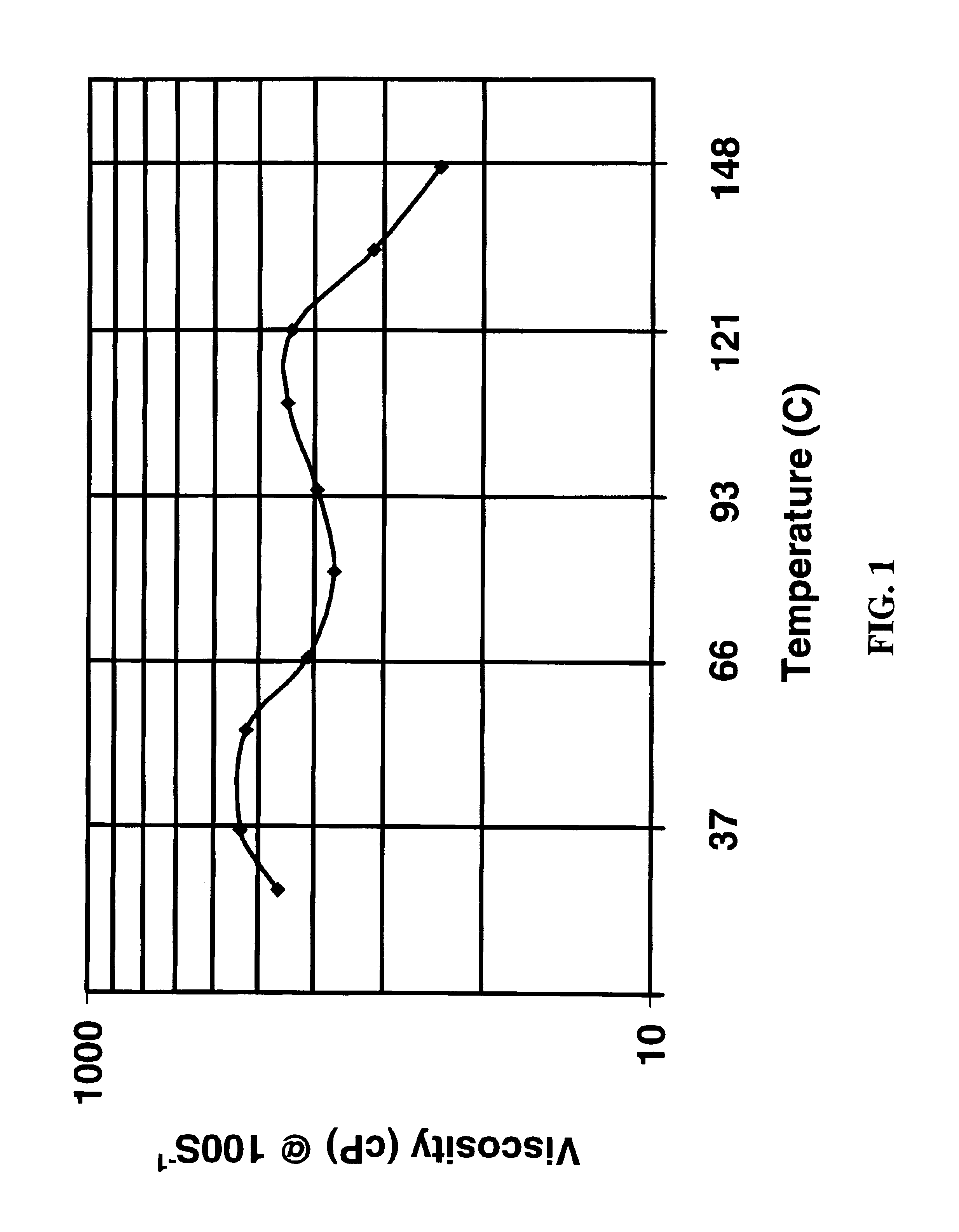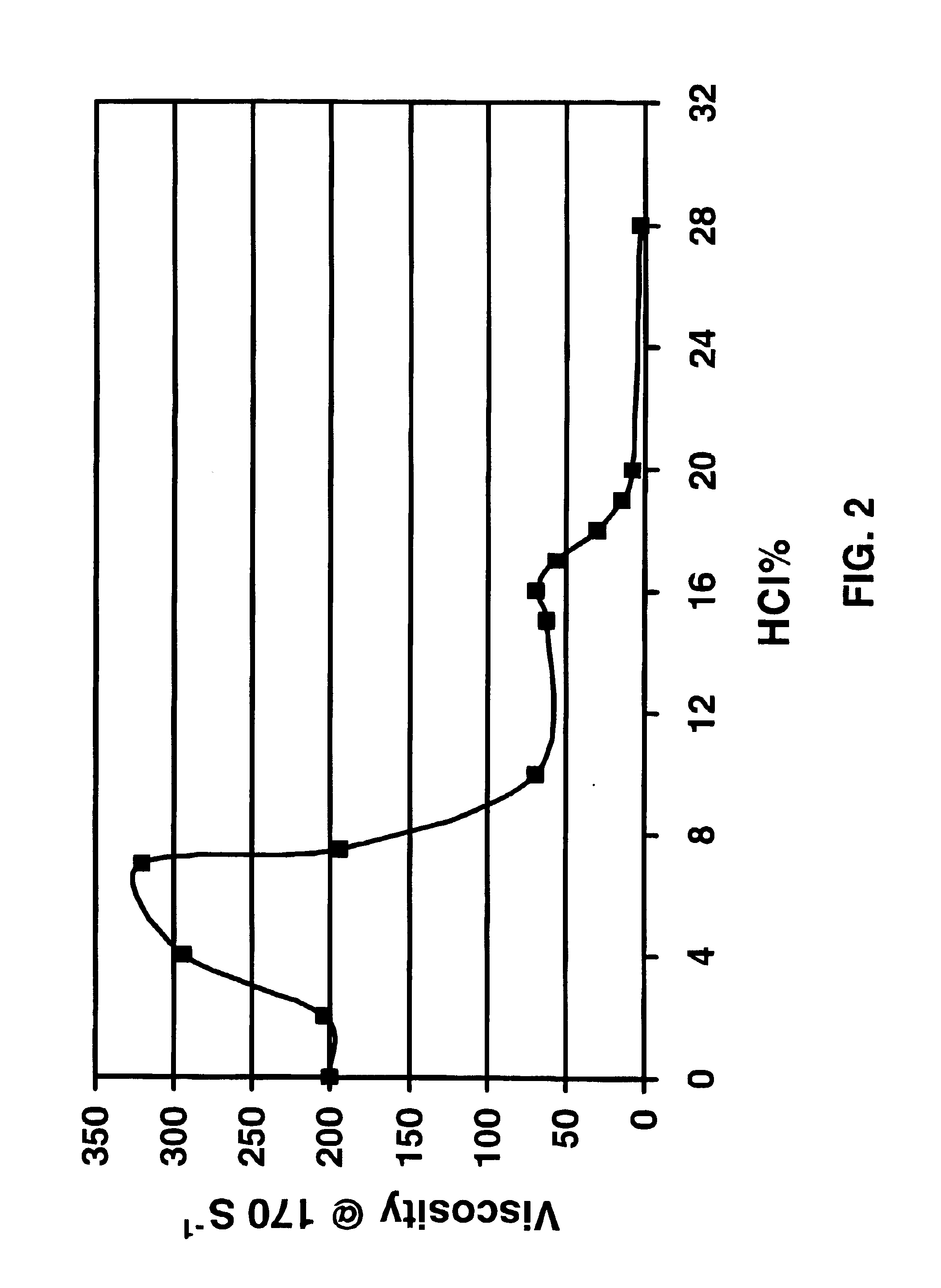Compositions and methods for treating a subterranean formation
a technology of subterranean formations and compositions, applied in the direction of fluid removal, chemistry apparatus and processes, borehole/well accessories, etc., can solve the problems of unsatisfactory production from these problematic zones, other less permeable zones or zones will be considered problemati
- Summary
- Abstract
- Description
- Claims
- Application Information
AI Technical Summary
Benefits of technology
Problems solved by technology
Method used
Image
Examples
example 1
[0052]Viscous high-temperature acid-degradable aqueous gels were made by mixing 7.5 volume percent as received BET-E-40 (therefore 3 percent active ingredient surfactant BET-E); varying amounts of concentrated (37 percent) HCl, 0.6 percent of a high temperature corrosion inhibitor mixture of formic acid, phenyl ketones and quaternary amines (hereinafter called corrosion inhibitor A); 2.0 percent of 85 percent formic acid as additional corrosion inhibitor (hereinafter called corrosion inhibitor B); and 1 percent methanol. These gels were then heated to 88° C., held at that temperature for varying amounts of time, cooled to room temperature, and observed. The results are shown in Table 1.
[0053]
TABLE 1Time (min)7% HCl4% HCl2% HCl15ViscousViscousViscous30ViscousViscousViscous45Less viscousViscousViscous60Water-likeViscousViscous90Phase separationLess viscousViscous120Less viscousViscous180Phase separationViscous
[0054]The table shows that the fluid becomes more unstable with increasing H...
example 2
[0060]The following fluids were prepared by mixing 7.5% by volume of BET-E-40 with 5-10% by weight of either potassium chloride or ammonium chloride.
[0061]Fluid 1: 7.5 volume per cent as received BET-E-40 and 5 percent potassium chloride; pH adjusted to 9.58 with sodium hydroxide.
[0062]Fluid 2: 7.5 volume percent as received BET-E-40 and 5 percent potassium chloride; pH adjusted to 6.52 with sodium hydroxide.
[0063]Fluid 3: 7.5 volume percent as received BET-E-40 and 10 percent potassium chloride; pH adjusted to 6.79 with sodium hydroxide.
[0064]Fluid 4: 7.5 volume percent as received BET-E-40 and 10 percent potassium chloride; pH adjusted to 7.81 with sodium hydroxide.
[0065]Fluid 5: 7.5 volume percent as received BET-E-40 and 5 percent ammonium chloride; pH adjusted to 7.40 with sodium hydroxide.
[0066]Fluid 6: 7.5 volume percent as received BET-E-40 and 7 percent ammonium chloride; pH adjusted to 7.78 with sodium hydroxide.
[0067]The viscosities of these materials were measured in a F...
example 3
[0077]The fluid of Example 1 containing 7 percent HCl was heated at 88° C. and at 66° C., held at those temperatures for varying amounts of time, cooled to room temperature, and observed. The viscosities of the cooled fluids were measured with a Fann 35 viscometer. The results are shown in Table 9 for each aging temperature at a shear rate of 170 sec−1 at room temperature.
[0078]
TABLE 9Time (Minutes)Aged at 88° C.Aged at 66° C.1532132130318309453123366016533690422941202199180660
[0079]The data in Examples 1 through 3 clearly show that these fluids can be stable in strong mineral acids at high temperatures for long enough to perform many oilfield operations and that they then degrade. The higher the mineral acid concentration, or the higher the temperature, the more rapidly the surfactant decomposes and the shorter the time before the fluid decomposes and any undesired effects are eliminated. Equipment was not available to these highly acidic fluids at temperatures above about 88° C. o...
PUM
 Login to View More
Login to View More Abstract
Description
Claims
Application Information
 Login to View More
Login to View More - R&D
- Intellectual Property
- Life Sciences
- Materials
- Tech Scout
- Unparalleled Data Quality
- Higher Quality Content
- 60% Fewer Hallucinations
Browse by: Latest US Patents, China's latest patents, Technical Efficacy Thesaurus, Application Domain, Technology Topic, Popular Technical Reports.
© 2025 PatSnap. All rights reserved.Legal|Privacy policy|Modern Slavery Act Transparency Statement|Sitemap|About US| Contact US: help@patsnap.com



